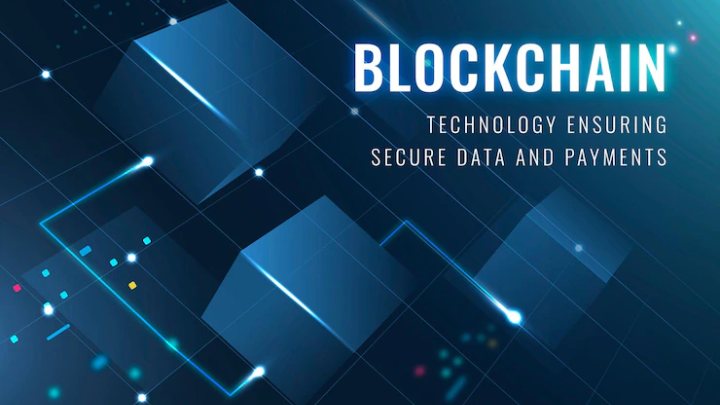
Blockchain technology has rapidly grown in popularity in the modern digital world, especially in the financial sector. Global financial transactions are becoming more efficient due to decentralization and peer-to-peer exchanges enabled by blockchain and distributed ledger technology. We will go in-depth of it and principles of Blockchain Technology in this article ahead.
Adding smart contracts to the blockchain was a major improvement that opened the door for technology use in various industries. Most blockchain applications are still used in the financial sector, particularly for settlement clearing, international payment clearing, and data security management. Top cryptocurrency exchanges allow businesses to transport and store data safely. The emergence of decentralized finance (DeFi) has further expanded the scope of blockchain applications, offering innovative solutions for lending, borrowing, and other financial services.
The tech industry has seen a proliferation of blockchain innovations for some time. Many companies are taking divergent approaches to design their blockchain for enterprise solutions in response to the new market. Keep your company’s requirements in mind as you design.
Jupiter’s Research report on blockchain technology predicts that by the end of 2030, banks will be able to reduce the cost of cross-border settlement transactions by as much as USD 27 billion, or more than 11%. Quick international payments were a primary source of motivation for developing these technologies, as was the desire to streamline everyday monetary interactions.
This article will, however, provide a simple introduction to Enterprise Blockchain App Development Company. And the different kinds of enterprise blockchain, and how they can aid your company in tackling difficult problems.
Principles of Blockchain Technology
Given below are the top 6 factors to consider for the said matter. Obviously, it may vary as per industry genre. But, these will give you an overall picture. You can edit it as per your business niche and your vision.
1. Embrace a free and open space for creativity
Creativity is always the best route to apply blockchain concepts best. But how do you guarantee success in fostering open innovation in every circumstance? First, encourage groups and individuals to work together to create open-source solutions.
When it comes down to it, open-source contributors can provide a wide range of people with different perspectives and a wealth of new ideas. In addition, with their assistance, you can guarantee that your code is of the highest quality possible.
On the other hand, participating in an open governance model has its advantages. These essential functions are under various forms of open-source licensing. Not using copyrighted technology is another principle of blockchain design to keep in mind. Instead, adopt open-source frameworks made with business in mind. Your innovations will receive a boost and save time and money if you can successfully implement your blockchain solution.
2. Improve discretion in Governance
The blockchain’s governance model is another important aspect of our principles guide. Make sure the model’s structure is easy to understand. What does this mean? Regulate your users and ensure no single entity has undue sway over the platform.
Because of this, distributed ledger technology (Blockchain) projects in corporations are a necessity. Try incorporating democratic rule into the system as part of the platform selection process. The design, of course, requires additional privacy and permissioning features.
Also, clearly define who can join the governance structure and how they can do so. However, trust anchors can be dispersed throughout the network at various nodes to verify transactions and keep the blockchain operational. Apart from this, there are various benefits of using blockchain in Finance industry.
The minimum recommended number of trust pillars for a more reliable governance structure is three. Scaling, however, has positive effects on the network at larger scales. Be wary of making a hasty decision about how to finance the governance structure. It is common to rely on operators, membership fees, or other funding sources. However, pick the one that best serves your business and its customers. As such, one of the key tenets of the principles underlying blockchain technology is the importance of proper governance.
3. The need for consistency
Consistency is another fundamental principle of blockchain technology. In reality, it inevitably loses its consistent output whenever a great technology tries to do something new or makes an update.
This causes a decline in their customer base or viewership. Realistically, the quality of the user experience is a major selling point, so it must be consistently excellent. It is important to perform extensive testing before releasing a major update or introducing a new feature.
If the update you release is buggy, it could damage your reputation. A flawed update to your internal network infrastructure also presents a potential entry point for cybercriminals. Therefore, it is important to maintain a high-quality standard while designing the blockchain’s infrastructure. Visual consistency also plays a significant role in the customer experience. It would help if you looked into using grid-based layouts, utilizing color accurately, and having a clear typographic hierarchy.
With blockchain still in its infancy, establishing trustworthy brand identity through visual consistency is essential. Design the visual style with the end user in mind. It’s important to consider the preferences of your target audience if you want to appeal to them. It’s a fantastic method of promotion, and it would do wonders for your blockchain venture.

4. Rapidly addressing problems
This concludes the series of articles outlining the fundamentals of blockchain technology. Accept the fact that blunders are inevitable. And those slip-ups could be major at times. You may only find some major issues, but if you test your project thoroughly, you should. This is why you should first conduct thorough testing before releasing something to the public.
After deployment, you will inevitably run into additional problems. Design your scenario with wiggle room in case there are problems. Don’t lose your cool over these hiccups. The best course of action is to fix all of the errors found promptly. Providing regular updates on the situation and resolving the problems will prevent damage to the brand’s reputation. Another consideration is the possibility of user mistakes. True, it’s cutting-edge technology, and naturally, no user will be an expert from the get-go.
Carefully addressing and educating them on these issues will help reduce their impact. Remember that any mistakes made by users will remain in immutable storage indefinitely. As a result, adding confirmation messages at various stages can help reduce mistakes. And you can guide them in the right direction by pointing them to the next step in those messages.
5. Go for common standards
The implementation of standards is the next tenet of blockchain design. There aren’t any hard and fast rules because the industry is always evolving, and new technologies are always being developed. Most projects, however, adhere to a set of district-wide standards.
You should take advantage of standards and follow them closely for the best results. Why? Blockchain technology is currently implemented in isolated silos, but this will eventually give way to a more distributed network structure.
This means that various blockchain systems can share information and learn from one another. However, proper interoperability requires the adoption of shared standards. However, for this purpose, you could use the data models made public by major enterprise blockchain platforms. Conversely, you can contribute to the development and creativity of the community by making public your policies and data models. Getting involved in a consortium would be a wise move here. It recommends that APIs with permissioned access can be used in the blockchain design.
For instance, self-sovereign identities should guarantee through established blockchain identity management protocols. That’s why the Decentralized Identity Foundation (DIF) laid out its requirements for identifying assets, people, and organizations.
6. Think about your privacy
The next tenet of blockchain technology to remember is the importance of personal data security. Make sure the users have full access to their information.
It will keep your network and all of your data safe, whether it stores on a personal device or a server. As an added precaution, ensure that a large quantity of data is spread across many nodes to facilitate the functionality. You should also incorporate a novel user-control feature to give users a complete say over who has access to their data and when.
While it’s true that no single blockchain participant would actually “own” data, credit must give to the creator. Look for APIs that already have built-in permissioning features.
However, remember to adhere to privacy regulations like GDPR. While it’s true that GDPR poses some risks to blockchain technology, this is not the case for all businesses. GDPR wants to preserve user information, and so does blockchain. Therefore, designing a model that adheres to GDPR standards is simple.
The Best Blockchain Solutions for Big Businesses
A blockchain platform enables the development of a blockchain application as your company adopts blockchain technology or finds novel uses for the existing blockchain infrastructure. To rephrase, using a blockchain developer platform enables enterprise blockchain companies or service providers to develop a blockchain solution that meets the unique needs of that enterprise.
There are a wide variety of blockchain development platform solutions available today. Let’s look at the most common approaches to providing businesses with reliable blockchain infrastructure.
1. Ethereum
Vitalik Buterin, a Russian, created Ethereum, a sophisticated blockchain platform. It is a permissionless platform and may not meet the confidential needs of enterprise applications but rather the needs of the general public. This blockchain network could be more efficient and faster.
Ethereum is an open-source platform that benefits from regular updates, improvements, and a sizable online support community.
Check out Ethereum Enterprise Alliance if you’re interested in building Ethereum-based apps (EEA). It is a non-profit organization that connects startups, academics, enterprises, and technology vendors with Ethereum subject matter experts.

2. Quorum
Quorums are public blockchain platforms that make it possible to build high-performance, niche applications. It has broad applicability and can be implemented in several settings to meet the needs of various industries, including the construction industry, digital currency, supply chains, and more. Programmers can use this framework to build blockchain applications on either a restricted network or Ethereum’s public Mainnet.
3. Hyperledger
Hyperledger is a blockchain platform that is both modular and open-source, allowing businesses to create robust blockchain ecosystems. Workflows are simplified, many redundant steps eliminates, and trust establishes.
Through Hyperledger, businesses can conduct secure and transparent transactions directly with one another over a peer-to-peer network. Examples of companies that use hyperledger are Intel and SAP Ariba.
4. Corda
Corda is a pioneering open-source platform and consortium in the blockchain space. By utilizing this permissioned platform for DLT applications, businesses can conduct safe transactions within a closed system. Asynchronous byzantine fault tolerance (ABFT) techniques enable fast and secure transaction agreements between nodes.
In addition, it has the capacity for smart contracts, which streamlines the process of exchanging digital documents and contracts. Banking behemoths HSBC and Bank of America are examples of companies using Corda.
Conclusion
Developing the infrastructure for a blockchain network is a complex undertaking. And this is where a lot of businesses need to be corrected. However, if you design your enterprise blockchain solution in accordance with blockchain technology’s principles, you will be fine.
It is important to remember that the fundamental principles of blockchain technology encompass both internal and external approaches to design. To succeed, you need to focus on more than just the technology or algorithms you employ.
We’ve laid out all the guidelines you need to design the project successfully, so hopefully, you’ll find them useful.
